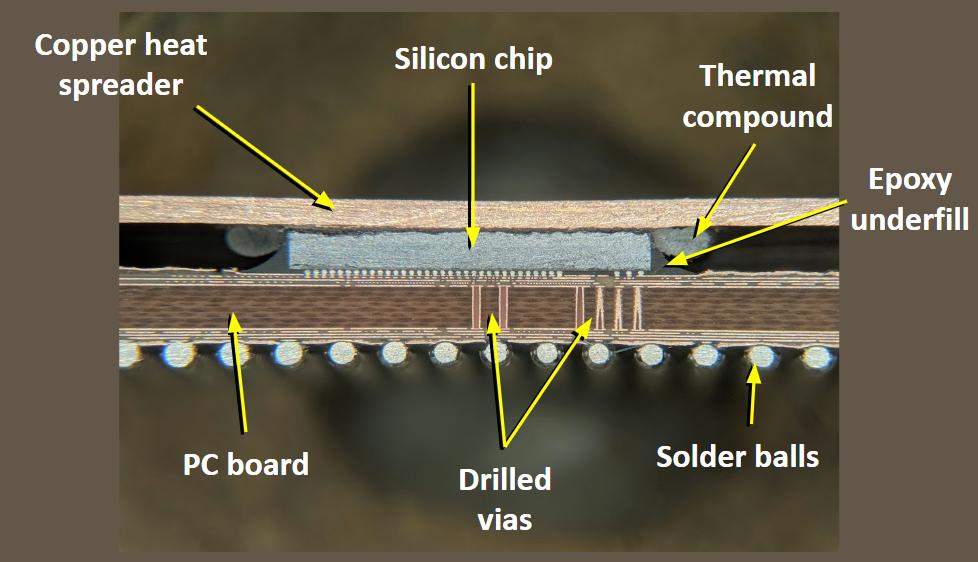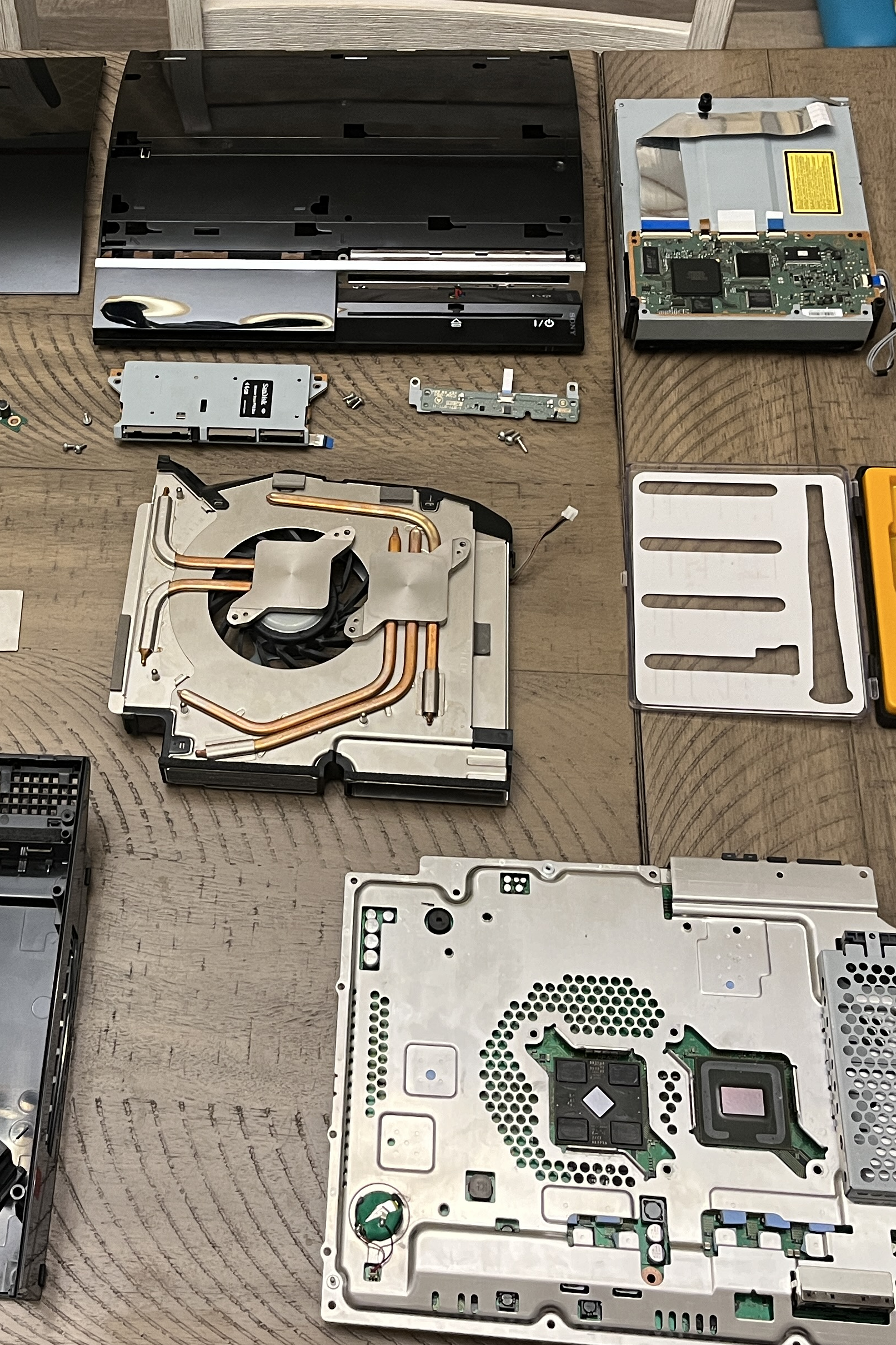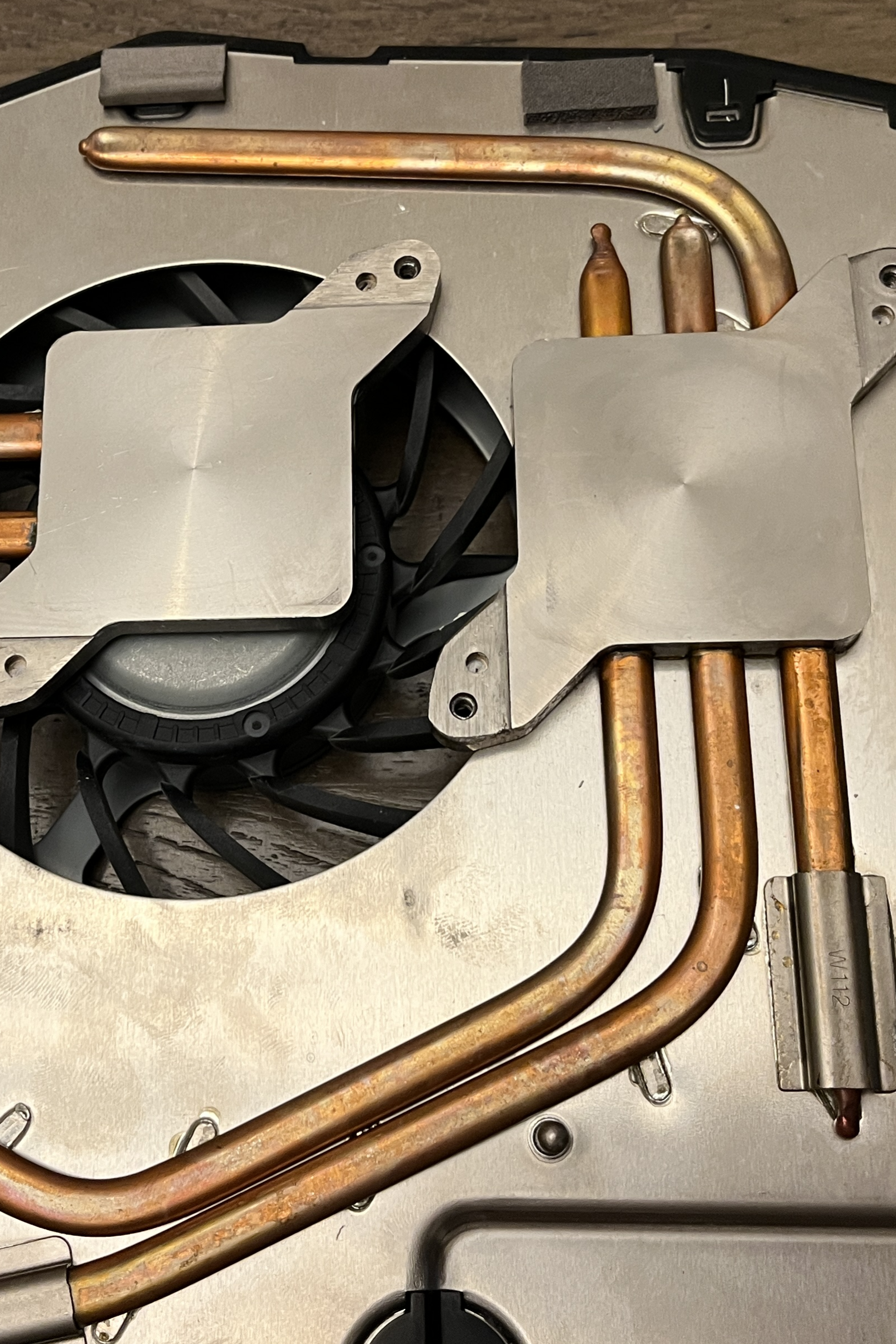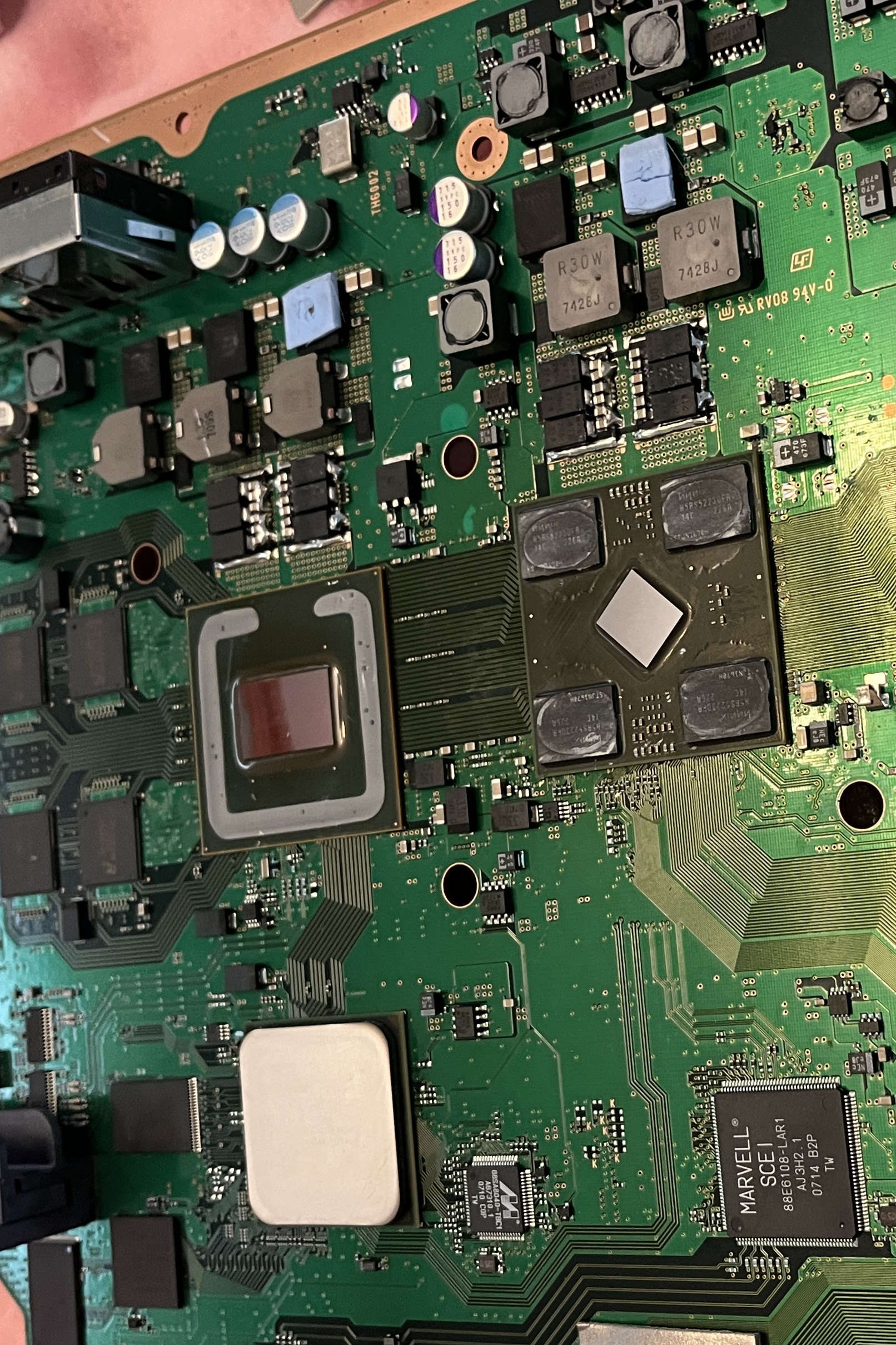Playstation 3 RSX Swap and Overclock
Gifted to me by my parents way back in 2007: the PlayStation 3. I have a CECHE01 model, with partial software PS2 backwards compatibility. It was the first console generation I followed from the pre-release hype through launch; and first time I really got into online gaming and modern gaming in general. I have lots of fond memories of the PS3, it was my main gaming console until I built a PC in late 2010. It still takes its place under my TV to this day as an all in one for PlayStation 1, 2 and 3 games.
The PS3 came during a troubled era for graphics processor, and my own experience at the time reflected this. I sent my system to Sony many times for the “yellow light of death.” This is a general hardware error light that would prevent the system from starting. At the time I did not understand what was wrong, but now almost 20 years later there is a much better understanding of what causes the “YLOD”, and even a fix!
The PS3 graphics processing unit was developed by Nvidia, based on the 7800 GTX GPU. The PS3’s at the time were using a 90nm node process, and there was a faulty fabrication and packaging issue that caused a very high failure rates of the chip. The chip would operate at a higher temperature than the underfill was designed to withstand, over time causing the chip to weaken between the chip and interposer. This issue was compounded by a few things:
- Mismatched coefficients of thermal expansion between materials in the die and interposer causing differential expansion during thermal cycles, placing mechanical stress on the BGA
- Electromigration within the solder joints led to the formation of voids weakening the remaining BGA connections
- The underfill material used in early versions had a relatively low glass transition temperature (Tg), which could be exceeded during prolonged use. Once the Tg was surpassed, the underfill lost structural integrity and provided less mechanical support to the solder joints

After enough time, enough of the connections between the die and interposer would break down from mechanical stress or electromigration, and the PS3 could not recognize the chip on boot, and would fail to boot and give the yellow light error message. This was a common issue in the backwards compatible systems, and not unique to Sony at the time. The Xbox 360 suffered similar issues, and so did Nvidia GPUs and Macbooks of the era. Eventually a smaller fabrication process and improved underfill solved the production issue, but this left early models doomed for eventual failure.
However in late 2020 it became possible to swap a defective 90nm RSX for a fixed 65nm or 40nm RSX from a later PS3 models. It is a very involved process, requiring a special BGA rework station to remove and resolder the new RSX, some voltage modifications to the supply the correct reduced power to the new RSX, and writing some new values to the SysCon so the system can actually boot with the new RSX. Lucky for me ComputerBooter in California can do the work, and I sent in my system to get the swap.
ComputerBooter did a great job with my system. His work was very clean and professional, and my system is working better than ever. I cannot recommend him enough.
Overclocking
My PS3 was swapped to a 40nm RSX, which opens a new opportunity: overclocking. The stock RSX clocks are 500mhz GPU and 650mhz vram. Using a tool from PSX-Place you can create a custom firmware to overclock the RSX. I was able to get my RSX up to 700mhz GPU and 850mhz vram. That is roughly a 40% boost in GPU performance and a 30% vram performance increase. In game, this translates to a big uplift in performance in many games that are GPU bound. Games that were struggling to maintain 60fps are now much more consistently holding it, if dropping at all. Same story for 30fps locked games. The only games that did not have significant improvement are games that are CPU bound, like Bethesda’s Fallout 3 and Skyrim. Overclocking the PS3 really puts a lot of life back into the system, bringing the performance more in line with what was on the Xbox 360 where many games were natively running better.
I was worried about the increase in heat output, but the cooling solution on the CHECH01 is designed for the 90nm RSX, the 40nm RSX creates so much less heat, that it is still 10c cooler overclocked than the original RSX was at stock mhz. It is about as close to a PS3 Pro as possible to create. If anyone has a old dead backwards compatible PS3 sitting around I highly recommend to get it fixed and overclocked.


